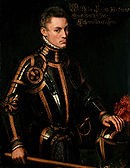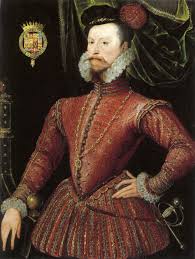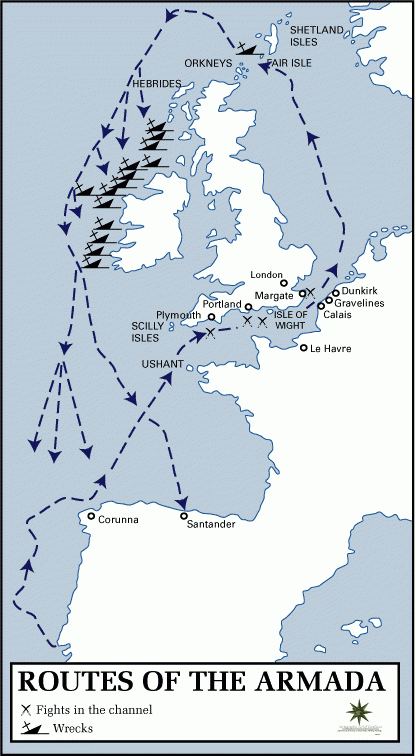William Cecil: Life Story
Elizabeth I’s Chief Councillor
Chapter 12 : Foreign Policy
Negotiations for Elizabeth’s marriage were, of course, just one strand in England’s foreign policy. Cecil’s long-term goal of creating a single, Protestant, British state, and helping co-religionists across Europe was manifested in other ways, not always successfully, as Queen and Minister did not necessarily agree on either aims or the right method to achieve them. Cecil was always a proponent of supporting of supporting Protestants abroad, although, conceptually, this had little appeal for Elizabeth who did not wish to give succour to people in rebellion against lawful authority.
England also needed to steer a course between the two European giants, France and Spain. Spain, and its associated territories, the Netherlands, had, historically, been England’s ally. In particular, the Netherlands was the greatest market for English exports. Difficulties arose when the Netherlands wanted to throw off the dominion of its Spanish king, Philip II and Philip, from having been friendly disposed towards England, whose king he had once been, decided that it was his role in life to reimpose the Roman Catholic religion both in the Netherlands and England.
Queen and minister were at odds on what should be done. Cecil was eager to support the Netherlands, because a proportion (although not all) were Protestant. Elizabeth baulked at undermining royal authority. The other stumbling block was the activities of the French – they, too, were involving themselves, with a view to taking over the Netherlands. From Elizabeth’s perspective, the possibility of French control was worse than Spanish.
In March 1572, England closed its borders to Dutch ‘Sea-Beggars’ who had been capturing Spanish shipping in the Channel. This brought about a rapprochement with Spain – relations having been frosty since the unravelling of the Ridolfi Plot, although by June, Philip was complaining that English interference was undermining his authority and Burghley (Cecil had been promoted to Baron Burghley that year) was informed that
‘[King Philip] has sworn that he will be revenged in such sort, as both the Queen and England shall repent that ever they did meddle in any of his countries.’
On 24th August 1572, something occurred that reinforced Burghley’s view of the urgent need for England to support co-religionists abroad. On that day, one of the worst massacres in Western European history, since the fall of Rome, began, carried out by the Catholics of France, against their Huguenot (French Protestant) countrymen. As many as 30,000 were killed in the days and weeks that followed.
At some point in 1572 (the memorandum is not accurately dated) Burghley set out the pros and cons of aiding the Dutch. We may infer, from the first article, that he did not share the note with the Queen.
Objections – First, for that her Majesty being by sex fearful, cannot but be irresolute.
Secondly, in respect her Majesty is not furnished with such store of treasure as were requisite for a prince that is to enter into wars (money being the sinews of the same).
Thirdly, she is unfurnished of expert soldiers fit for the wars.
And again, (1) the wars may seem unjust and to maintain rebels
(2) In respect of the ancient league between [England] and [Spain];
(3) The greatness of the Prince with whom she is to contend [Philip]
(4) For that another [France] may grow over great.[1]
In favour of involvement, Burghley listed the fact that Spain had supported the Rising of the Northern Earls, that Philip’s previous Governor in the Netherland, the Duke of Alba had slandered Elizabeth, that Spain was behind the Papal Bull excommunicating Elizabeth, and, most of all, that Philip was supporting Mary, Queen of Scots, and had sent a ship full of bullion to her party in Scotland (at that time torn between the Queen’s Party and the King’s Party). Positives to be gained were that:
By joining the enterprise her Majesty shall advance the cause of the religion; (2) her Majesty with her confederates shall give liberty to all Europe [2]
And further, that her intervention would take the glory away from the French Guise party that was supporting the Dutch – even though at home the Guises were militantly Catholic and violently supressing the Huguenots.
Although accused of interference, Elizabeth forbore to send troops to the Dutch leader, William of Orange in December of that year.
Elizabeth then made strenuous efforts to broker a peace when Philip’s new deputy in the Netherlands, Don Luis de Requesens y Zúñiga, took a more conciliatory line with the rebels. The Spanish agreed to remove their troops, provided Catholicism was imposed and maintained. Elizabeth thought the Dutch should accept this compromise, and was displeased that William of Orange refused to do so. His desire for religious tolerance, was, she thought, quite indefensible and in 1575, Burghley was commanded to write to all the ports forbidding the landing of William of Orange or any of his supporters.

After Requesens’ death in March 1576, and before the arrival of the new Governor, the Philip’s half-brother, Don John of Austria, the unpaid Spanish army sacked Antwerp, uniting the disparate rebel forces against Spain. Don John, whose ultimate mission appears to have been an invasion of England, followed by marriage to Mary, Queen of Scots and the taking of the English throne, was forced to comprise with the Dutch.
The Pacification of Ghent was agreed amongst Netherlandish states, agreeing to raise an army to resist Don John and Spain. Don Juan accepted terms, in the Perpetual Edict, agreeing that Spanish troops would return home. He planned to send them via England. Elizabeth immediately refused to allow them safe passage, believing it was but the cover for an invasion. Don John then broke the terms of the Perpetual Edict by capturing the town of Naumur.
Finally driven to involvement, Elizabeth authorised the sending of a large amount of cash to the Dutch. She was obliged to pawn her own jewels to raise it. She would not, however, openly intervene, instead, she carried on the discussions about a marriage to Francois, Duke of Alencon (later Duke of Anjou) with a view to controlling French activities in the Netherlands.

Over the following ten years, tensions escalated. More plots were uncovered to put Mary Queen of Scots on the throne; France was scarred by ugly and repeated religious civil wars, and the Dutch and Spanish continued to fight. In the early 1580s, Elizabeth was persuaded to direct intervention, although she and Burghley had qualms about the cost, and the risk of provoking Spain to the point of no return. The Earl of Leicester was sent to represent England, and to lead her forces. Nothing was fully resolved, and, in the end, Leicester was withdrawn in 1587.
With the execution of Mary, Queen of Scots in 1587 which, for Burghley, was the triumphant vindication of his long campaign against her, there was no possibility of averting war with Spain. In another of his detailed memoranda, Burghley set out the best way to organise the Queen’s troops and navy to forestall invasion.
He calculated the number of ships available to be 37, with 6,000 men, plus some further merchant shipping. He also hoped that some additional ships might be obtained from the King of Scots, since he might reasonably expect to succeed Elizabeth. The ships were to be divided into two fleets, one part to protect the entry to the channel from the west, and the other part at the eastern end.
In all, he calculated that the costs of the ships, together with paying the men, victualling the ships, and providing arms would amount to some £60-70,000. In addition, an army would need to be raised and paid – at least £24,000 for two months. Then there was the necessity for men for the Scots border, for Ireland and for Kent, costing at least a further £20,000. He calculated that the costs the Queen had already incurred in the Netherlands were at least £130,000 per annum.

With these costs, and a treasury that was not overfull (inflation was a scourge in the sixteenth century), it was not surprising he also weighed up the advantages of making a treaty with Spain, even at that late point. For Burghley, though, no peace could be entered into unless Spain were willing to cede religious toleration to the Protestants in the Netherlands – he does not seem to have reflected that a similar religious toleration might be granted at home to Catholics.
With the defeat of the Armada of 1588, the worst threat to English security was past, although Spain made several further attempts to invade.With the accession in France of Henri of Navarre, a Huguenot who converted to Catholicism saying ‘Paris is worth a Mass’, there seemed less to fear from France as well.
Sources
[1] http://www.british-history.ac.uk/cal-cecil-papers/vol2/pp29-42 Words in [] added.
[2] ibid.





